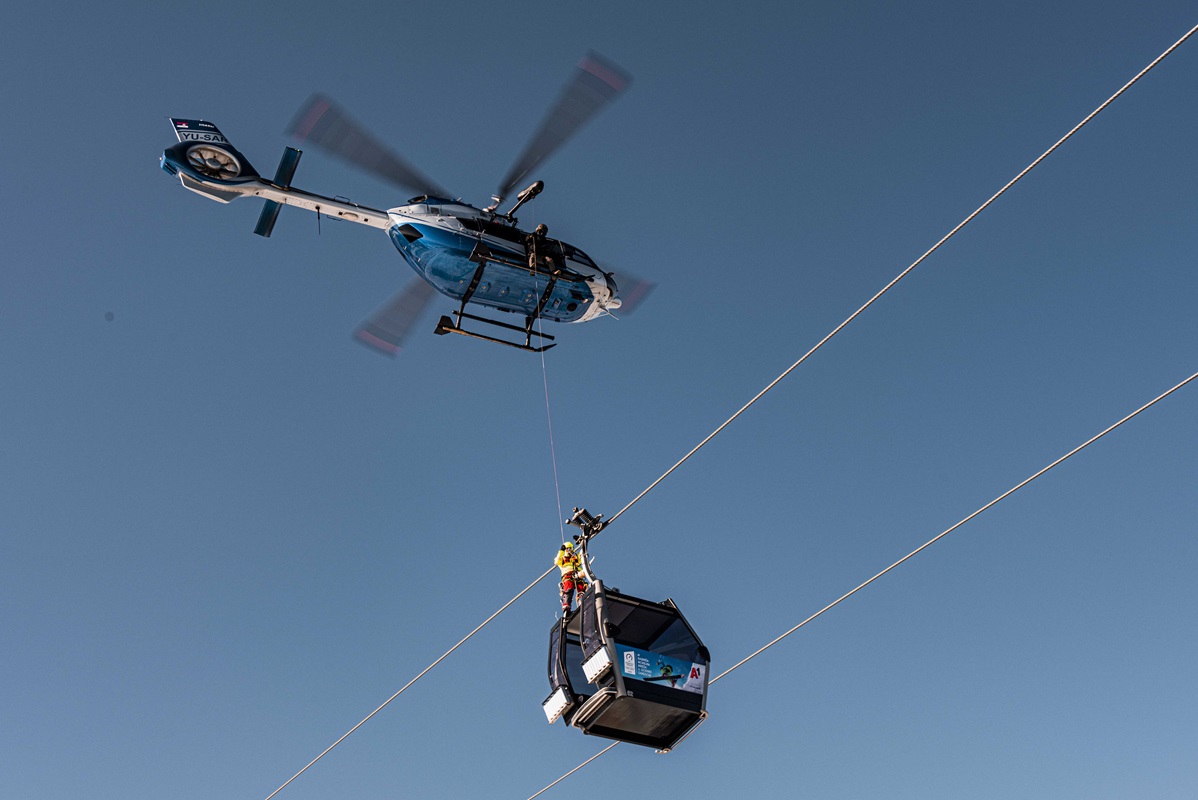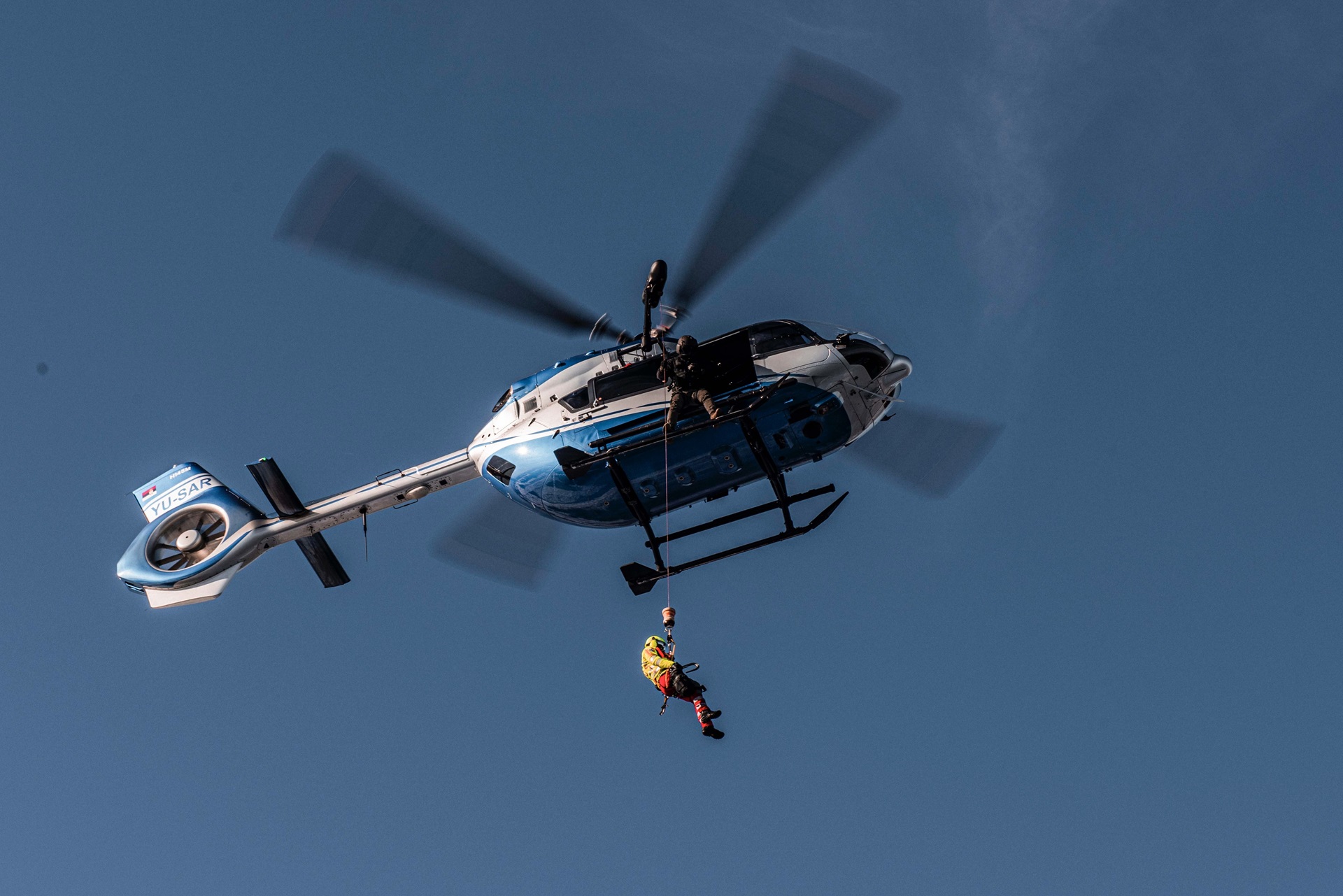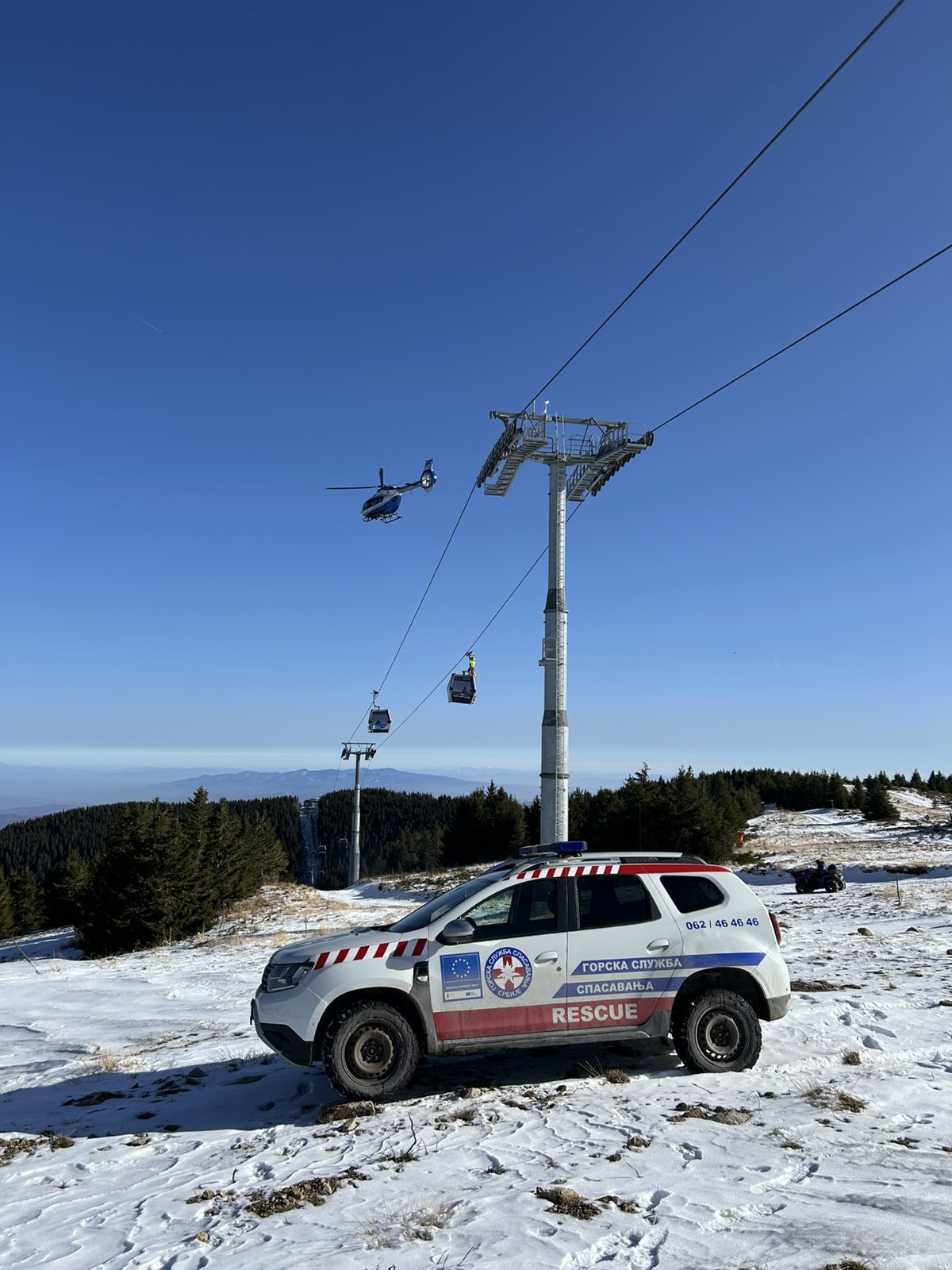Kopaonik, November 26, 2024 - With the support of the European Union, rescuers from the Mountain Rescue Service (MRRS) of Serbia, in collaboration with the Helicopter Unit of the Ministry of the Interior (MoI) and the Ski Resorts of Serbia, carried out the first passenger evacuation drill from a gondola using a helicopter at Kopaonik. This achieved the highest global standard in the field of technical rescue.

Using the helicopter's winch, MRSS rescuers descended onto two gondola cabins, from which they safely evacuated the passengers to the ground. After completing the passenger evacuation, one rescuer was returned to the helicopter, while the other descended independently to the ground. This exercise simulated a real situation that can occur at ski resorts across Serbia.
"Rescues involving MRSS rescuers are always lengthy and physically demanding, mostly due to the inaccessibility of the terrain. The collaboration between our service and the Helicopter Unit significantly shortens the time for rescuers to reach an accident site, provide first aid to the injured, and evacuate them to the nearest medical facility," said Aleksandar Ravas, a rescuer from the Mountain Rescue Service.


Helicopter rescue is one of the most technically complex forms of rescue, requiring constant training and coordination between helicopter pilots and crew and mountain rescuers.
As part of the "EU for Serbia Resilient to Disasters" project, MRSS rescuers had the opportunity to enhance their skills in advanced training in Romania and Germany and to practice demanding scenarios according to world standards. Besides helicopter training, other specialized training sessions for MRSS members were organized, such as cable car rescue and water rescue. All organized training was in accordance with European standards. Now they are applying their new skills in Serbia at ski resorts across the country. Additionally, MRSS received a donation of vehicles, uniforms, and equipment valued at over 200,000 euros, enabling rescuers to be efficient in hard-to-reach terrains.
These activities were carried out within the framework of the "EU for Serbia Resilient to Disasters" project, funded by the European Union and implemented by the United Nations Development Programme.
